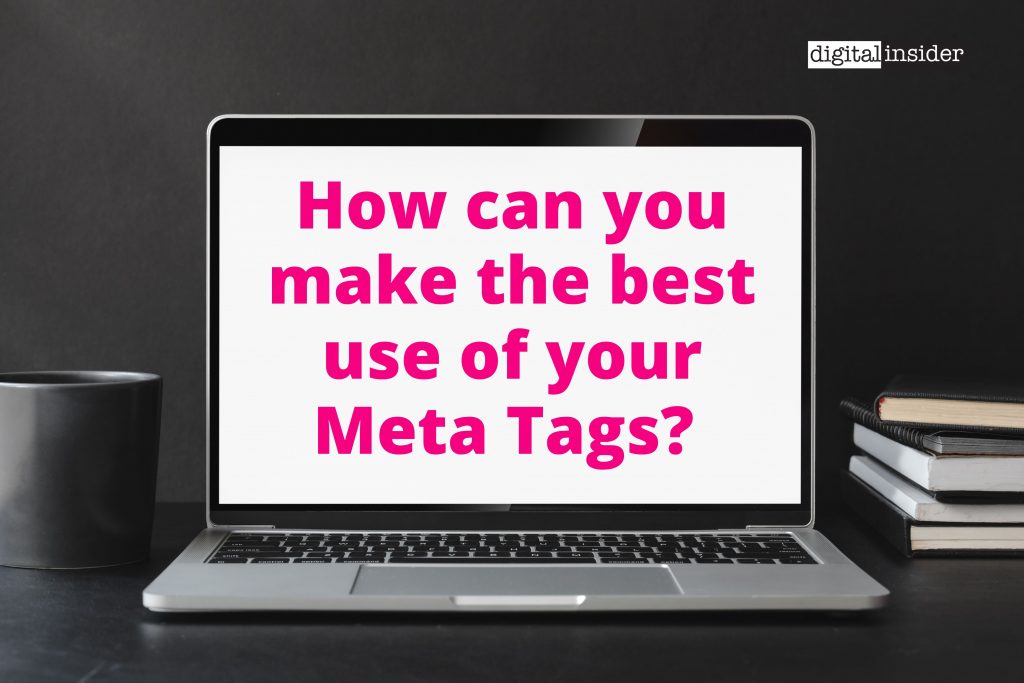SEO practices have expanded over the years so it’s not simply incorporating a few keywords throughout your content. Now, it’s so much more than that!
Link building is thought to be the cornerstone of optimisation but what about meta tags? It’s important not to focus all your energy on one type of optimisation and rather have a comprehensive SEO strategy.
In this guide, we’re talking about the top meta tags to use for SEO. Continue reading to learn why these meta tags are important and how to use them to optimise your page ranking.
What is a Meta Tag?
Meta tags are used in HTML or XHTML documents when building a webpage. These tags provide search engines information about a website. They are placed in the <head> section of your HTML document and they tell search engines how to display it on SERPs (Search Engine Results Pages).
Why Do You Need Meta Tags for SEO?
Meta tags show more detail about your webpage when internet users search for specific keywords. These tags highlight the most important information of your content to make your page stand out when they show up in SERPs.
Search engines value positive user experiences. So your site must satisfy a user’s query on a topic. Meta tags ensure that information users need to know about is displayed in a way that’s easy to understand, which makes their experience positive.
Without meta tags people may not click on your webpage, which will affect your site traffic and your conversion rates if you’re selling products.

4 Most Important Meta Tags for SEO
There are many types of meta tags but not all of them are relevant to Search Engine Optimisation. However, there are four meta tags that are vital to SEO and which you should always include in your optimisation strategy. Take a look at these tags below with examples and best practices.
1. Meta Title
Your title tag is the first piece of content users will notice on SERPs. The meta title gives the reader a preview of what the rest of your content is all about. It’s said that a meta title tag is one of the most important search engine optimisation elements.
A well written meta title may increase your click through rate which in turn will boost your site’s traffic. That’s why it’s important to structure your meta titles correctly. They shouldn’t misinform a potential visitor.
Examples
Title meta tags are placed in the head of your webpage. Here are a few examples of title tags for various types of content:
- Blog post: Top 10 SEO Strategies for Your Food Blog
- Home page: Use the name of your business – e.g. The Chocolate Den
- Landing page: Name of your business and a title e.g. Wix – Design Your Webpage Right Here!
- Pricing page: Packages and Pricing Plans
Best Practices
- You must write unique titles for each of your pages on your website
- Create a meta title that is click worthy and isn’t click bait
- The titles must be concise and easy to understand
- Don’t use generic or vague titles
- Keep the meta title under 60 characters
- Include your main or target keyword in the title
- Primary keywords should be added at the beginning of the title tag
2. Meta Description
A meta description is a short snippet that summarises your page’s content. The information is sometimes used as a snippet in search results to give potential visitors more detail about your content.
The meta description should be written in such a way that it peaks a potential visitor’s interest. Its main goal is to inform the reader of what the content is about and entice them to want to learn more about your business.
Examples
When writing a meta description, it should be concise and provide as much information using as few characters as possible. Here is an example of a meta description:
- Do you want to know more about meta tags for SEO? Read the complete guide we’ve created right here! Start using this comprehensive SEO strategy today!
- Example Plumbing Company provides professional domestic plumbing services to residents living in the Melbourne area. 7 Days a Week. Call (03) 1234 5678.

Best Practices
- Your meta description should include your main keyword
- The description shouldn’t be longer than 160 characters
- Write unique descriptions for each page
- Avoid using generic descriptions
- Make it punchy to entice your readers to want to learn more
- Type concise sentences
- End with a call to action
3. Meta Robot
A meta robot tag tells search engines how they should crawl your site. It’s essentially a piece of code in the <head> section of your webpage that helps you manage which sections you want crawled and indexed.
Using the incorrect meta robots can have a huge impact on your webpage’s visibility on SERPs. You must understand these tags so you can use them effectively.
Examples
Take a look at the meta robot tags to possibly use for your web pages:
- Index: Tells robots to index your webpage
- Noindex: Informs robots not to index a site
- Follow: This code tells robots to crawl links on a page
- Nofollow: The code tells robots not to crawl a page
You can use the above information to create the following codes for your webpage:
<meta name=”robots” content=”noindex, nofollow”>
<meta name=”robots” content=”index, follow”>
<meta name=”robots” content=”noindex, follow”>
<meta name=”robots” content=”index, no follow”>
Best Practices
- Close pages that waste crawl budget
- Only use meta robot tags when you want to restrict the way Google crawls your page
- Avoid blocking meta robots tags in robots.txt
- Make sure you don’t restrict important pages from being indexed
4. Image Alt Attributes
Image alt tags are used to describe what your image represents. Most people don’t know the importance of image alt tags but they are crucial for SEO for two reasons:
- The alt information gives context to the image because search engines can’t see pictures.
- Alt text will show up if the image doesn’t load so that the visitor knows what the image is about.
For online retail pages, images sometimes have an impact on how visitors interact with a webpage so it’s important to use alt tags to describe what the image is.
Examples
If you want your website’s images to also rank high in Google’s image search results, then placing alt tags on them will boost their ranking. For example, if you have an image of a purple flower, make sure you use this in your alt tag to depict what the image is showing.
Best Practices
- Optimise your most prominent images
- Use your title tag keyword in your image alt tag
- Alt tags must be descriptive and concise
Final Thoughts
Do you want assistance with creating strong SEO practices for your webpage? Then let Digital Insider assist you with your SEO strategy so that you can outrank your competitors. We have a process that will help boost your webpage organically and increase your click through rates.
Call us today on 0459 845 633 or find more information here if you want unique SEO content that will push your website right to the top of Google’s SERPs.
